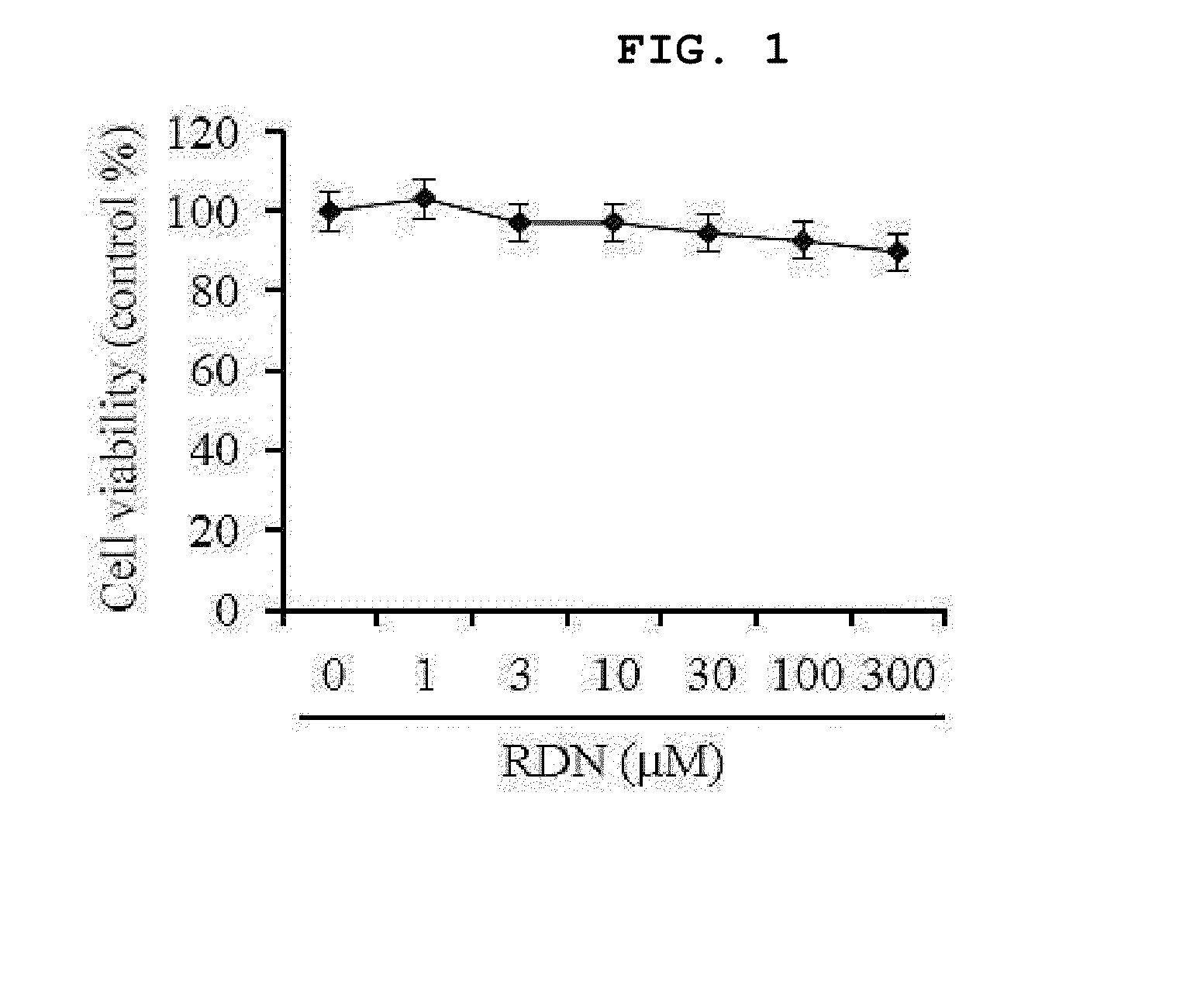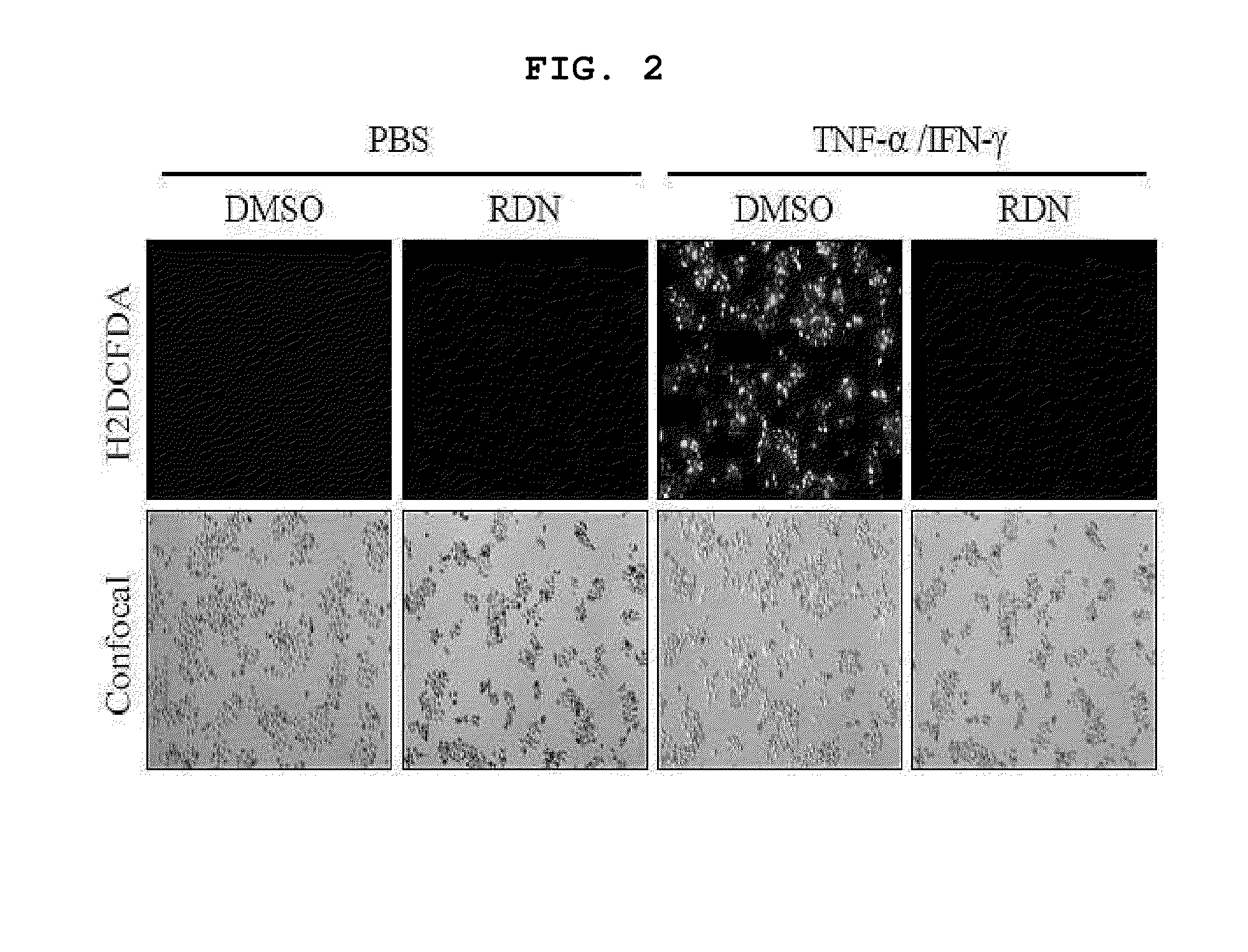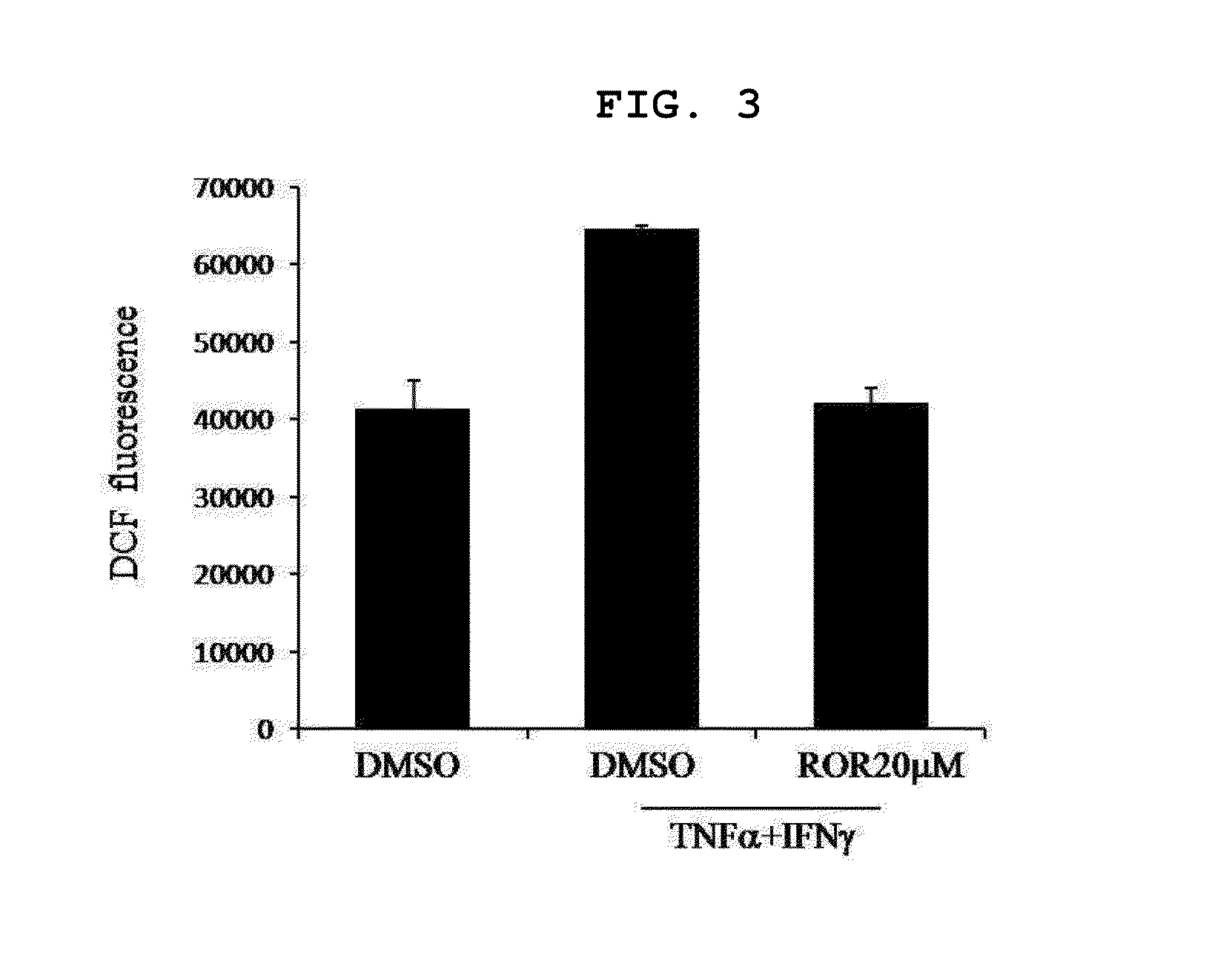Novel use of rhododendrin
a technology of rhododendron and rhododendron, which is applied in the field of new use of rhododendron, can solve the problems of no report demonstrating the antioxidant activity of rhododendron, damage to proteins, lipids and other components, which constitute cells and tissues, and achieve the effect of eliminating a large amount of ros generated, effectively using, and inhibiting skin cell proliferation
- Summary
- Abstract
- Description
- Claims
- Application Information
AI Technical Summary
Benefits of technology
Problems solved by technology
Method used
Image
Examples
example 1
Isolation and Purification of Rhododendron
[0080]Powdered R. brachycarpum leaves were repeatedly extracted with dichloromethane (10 L×3) and methanol (10 L×3). The combined crude extract (52.8 g) was partitioned between water (H2O) and n-butanol (24.1 g), and the latter fraction was re-partitioned between n-hexane (4.9 g) and 15% aqueous methanol (MeOH; 20.9 g). An aliquot of 15% aqueous MeOH layer (6.0 g) was subjected to reversed-phase vacuum flash chromatography using sequential mixtures of H2O and MeOH as eluents (elution order: 50%, 40%, 30%, 20%, 10% aqueous MeOH, and 100% MeOH; 100% acetone, and 100% ethyl acetate). The fraction (1,080 mg) eluted with 40% aqueous MeOH from flash chromatography was separated by semi-preparative high-performance liquid chromatography (HPLC; YMC ODS-A column, 5 m, 250×10 mm, 50% aqueous MeOH) to yield rhododendrin. Final purification was then performed by reversed-phase HPLC (YMC ODS-A column, 5 m, 250×4.6 mm, 60% aqueous MeOH) to produce 141.2 ...
example 2
Examination of Cytotoxicity of Rhododendrin
[0081]HaCaT cells were purchased from CLS Cell Line Service GmbH (Eppelheim, Germany). HaCaT cells were seeded at a density of 2×104 cells / well in 96-well plates. After a 12 hours incubation, the cells were incubated with various concentrations of rhododendrin for 24 hours. Then, cells were incubated with 3-(4,5-dimethylthiaol-2-yl)-2,5-diphenyltetrazolium bromide (MTT) reagent for 2-4 hours at 37° C. To calculate cell viability, MTT signals were quantified with a microplate reader (BioTek, Winooski, Vt., USA) at wavelength of 540 nm.
[0082]The results are shown in FIG. 1. From the results in FIG. 1, it can be seen that rhododendrin has no cytotoxicity.
example 3
ROS Scavenging Activity (Antioxidant Effect of Rhododendrin
[0083]3-1: Induction of ROS Production by TNF-α / IFN-γ
[0084]HaCaT cells were seeded at a density of 3×105 cells / well in 6-well plates for 12 hours. Cells were washed with serum-free media, treated with 20 μm rhododendrin for 1 hour, and then stimulated with 10 ng / ml of TNF-α and 100 U / ml of IFN-7 for 3 hours. The cells were stabilized in Hanks' balanced salt solution (HBSS) for 30 minutes, stained with 10 μM 2′,7′-dichlorofluorescin diacetate (H2DCF-DA) at 37° C. for 30 minutes, and ROS signal was then analyzed with confocal microscopy with emission at 513 nm and excitation at 488 nm. Also, the fluorescence of the cells was measured with a microplate reader (Synergy, BIO TEK, US).
[0085]The results of the measurement are shown in FIGS. 2 and 3. As can be seen therein, in the group stimulated with TNF-α / IFN-γ but not treated with rhododendrin, a large amount of ROS were generated, whereas in the group treated with rhododendrin ...
PUM
| Property | Measurement | Unit |
|---|---|---|
| Cytotoxicity | aaaaa | aaaaa |
Abstract
Description
Claims
Application Information
 Login to View More
Login to View More - R&D
- Intellectual Property
- Life Sciences
- Materials
- Tech Scout
- Unparalleled Data Quality
- Higher Quality Content
- 60% Fewer Hallucinations
Browse by: Latest US Patents, China's latest patents, Technical Efficacy Thesaurus, Application Domain, Technology Topic, Popular Technical Reports.
© 2025 PatSnap. All rights reserved.Legal|Privacy policy|Modern Slavery Act Transparency Statement|Sitemap|About US| Contact US: help@patsnap.com



